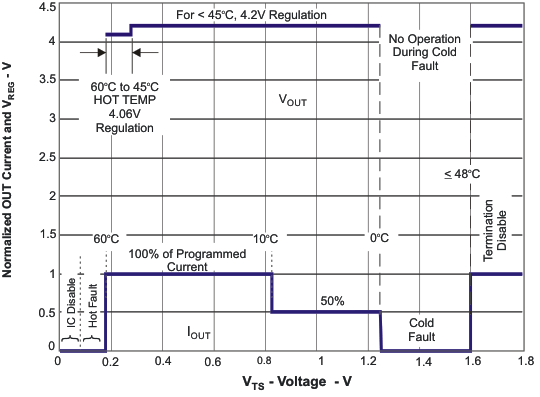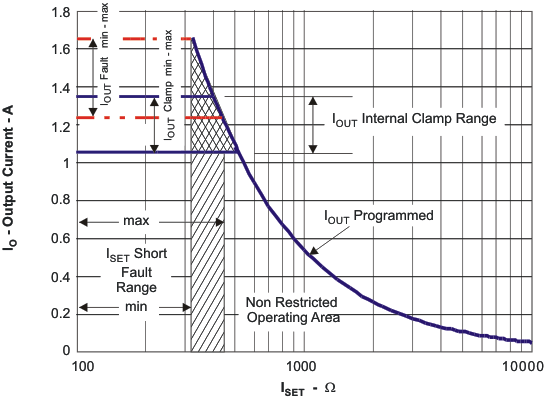ZHCSND4H january 2010 – april 2021 BQ24090 , BQ24091 , BQ24092 , BQ24093 , BQ24095
PRODUCTION DATA
- 1
- 1 特性
- 2 应用
- 3 说明
- 4 Revision History
- 5 说明(续)
- 6 Device Options
- 7 Pin Configuration and Functions
-
8 Specifications
- 8.1 Absolute Maximum Ratings #GUID-9FC6FB05-10A6-4323-9A52-EE32AE4C5F67/SLUS9405873
- 8.2 ESD Ratings
- 8.3 Recommended Operating Conditions #GUID-4D70561B-CB71-403D-B731-8EF5DEBEBDF9/SLUS9401392
- 8.4 Thermal Information
- 8.5 Dissipation Ratings #GUID-196940BE-C3C2-4CDF-A8A4-7C186292F803/SLUS9404025 #GUID-196940BE-C3C2-4CDF-A8A4-7C186292F803/SLUS9403553
- 8.6 Electrical Characteristics
- 8.7 Typical Characteristics
-
9 Detailed Description
- 9.1 Overview
- 9.2 Functional Block Diagram
- 9.3
Feature Description
- 9.3.1 Power Down or Undervoltage Lockout (UVLO)
- 9.3.2 UVLO
- 9.3.3 Power Up
- 9.3.4 Sleep Mode
- 9.3.5 New Charge Cycle
- 9.3.6 Overvoltage Protection (OVP) – Continuously Monitored
- 9.3.7 Power Good Indication ( PG)
- 9.3.8 CHG Pin Indication
- 9.3.9 CHG and PG LED Pullup Source
- 9.3.10 IN-DPM (VIN-DPM or IN–DPM)
- 9.3.11 OUT
- 9.3.12 ISET
- 9.3.13 PRE_TERM – Precharge and Termination Programmable Threshold
- 9.3.14 ISET2
- 9.3.15 TS
- 9.4 Device Functional Modes
- 10Application and Implementation
- 11Power Supply Recommendations
- 12Layout
- 13Device and Documentation Support
- Mechanical, Packaging, and Orderable Information
9.3.12 ISET
An external resistor is used to program the output current (50 to 1000 mA) and can be used as a current monitor.
where
- IOUT is the desired fast charge current
- KISET is a gain factor found in the electrical specification
For greater accuracy at lower currents, part of the sense FET is disabled to give better resolution. Figure 8-11 shows the transition from low current to higher current. Going from higher currents to low currents, there is hysteresis and the transition occurs around 0.15 A.
The ISET resistor is short protected and will detect a resistance lower than ≉340 Ω. The detection requires at least 80 mA of output current. If a short is detected, then the IC will latch off and can only be reset by cycling the power. The OUT current is internally clamped to a maximum current between 1.1 A and 1.35 A and is independent of the ISET short detection circuitry, as shown in Figure 9-5. Also, see Figure 10-4 and Figure 8-7.
 Figure 9-4 Operation Over TS Bias Voltage
Figure 9-4 Operation Over TS Bias Voltage Figure 9-5 Programmed/Clamped Out Current
Figure 9-5 Programmed/Clamped Out Current